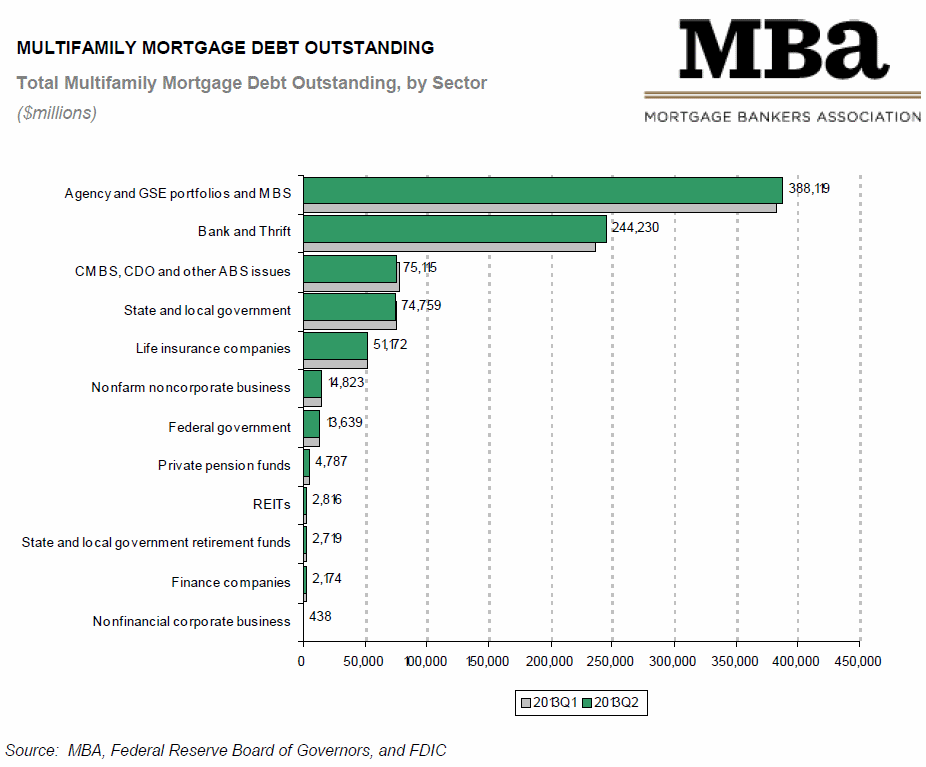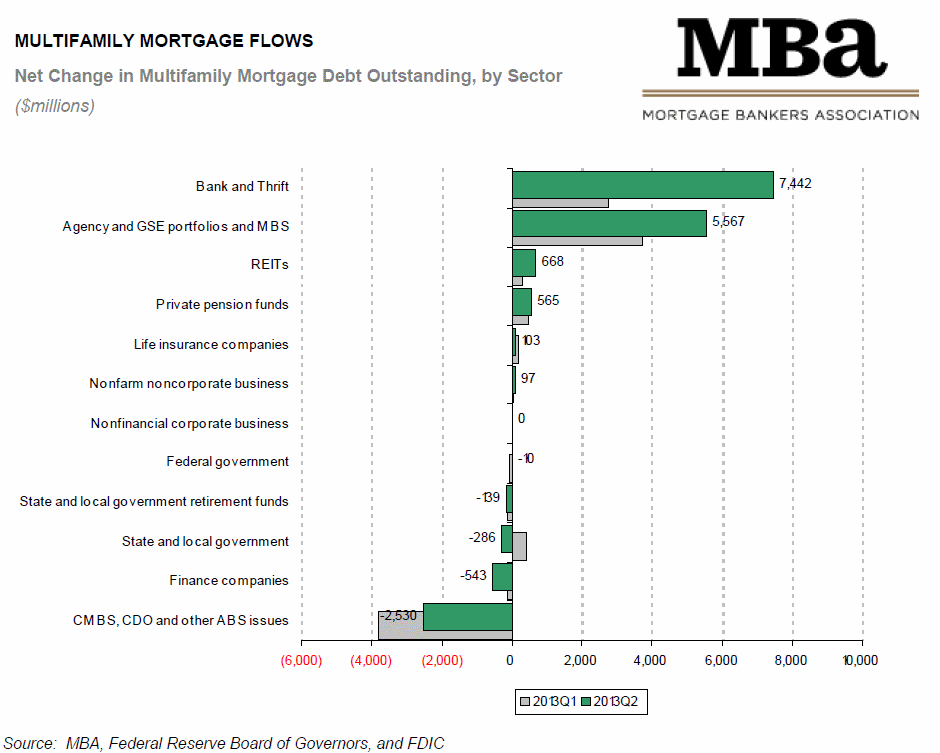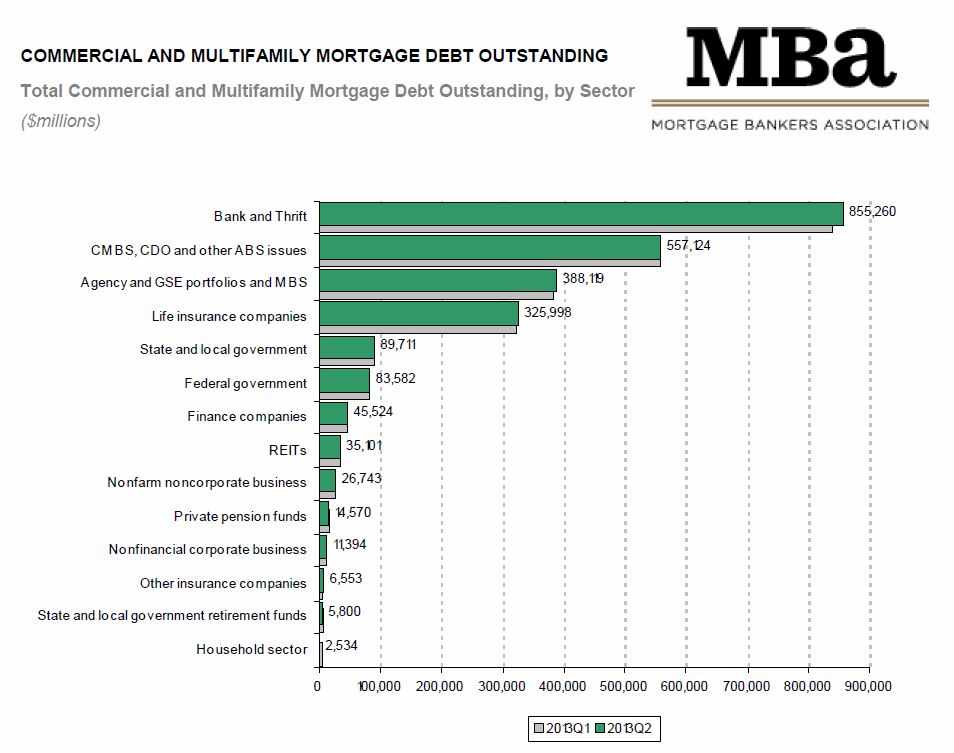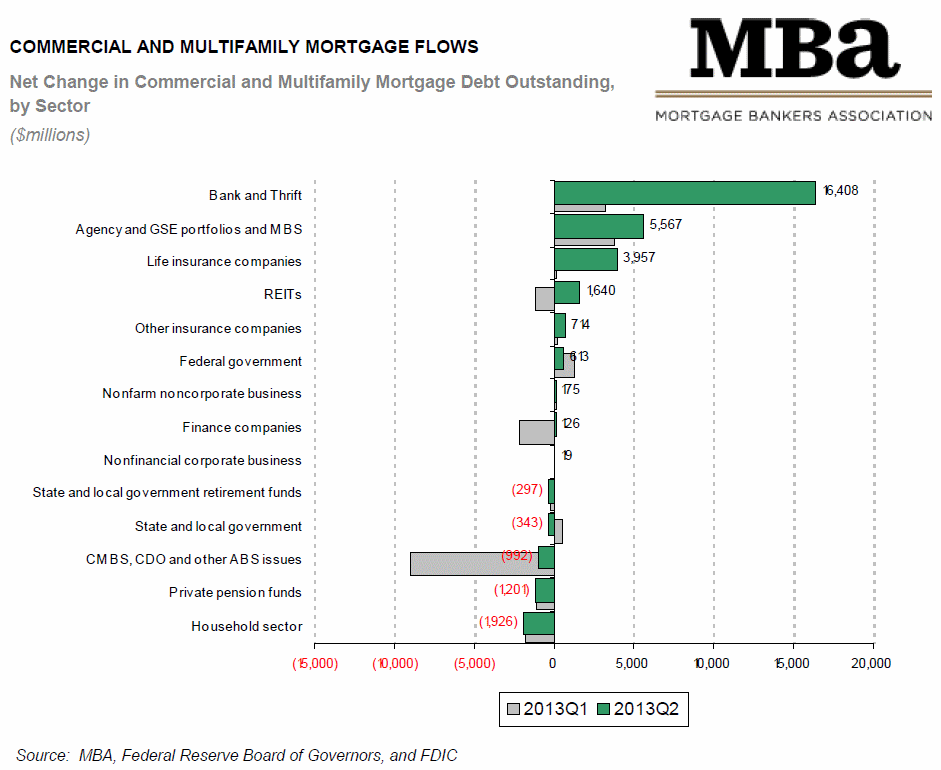Commercial and multi-family mortgage debt increased by $24.5 billion in the second quarter of 2013, with $10.9 billion of that being debt in the multi-family sector. The Mortgage Bankers Association (MBA) said the increase in debt from quarter to quarter was 1.0 percent for all mortgage debt and 1.3 percent for multi-family. The aggregate outstanding commercial and multifamily debt at the end of the second quarter was $2.45 trillion; the multifamily portion was $875 billion.
MBA's Vice President of Commercial Real Estate Research, Jamie Woodwell, said of the numbers, "A strong appetite among investors to put their money to work in commercial and multifamily mortgages led to an increase in the level of mortgage debt outstanding. In the second quarter alone, banks increased their holdings of commercial and multifamily mortgages by $16 billion; Fannie Mae, Freddie Mac and FHA increased their multifamily holdings and guarantees by $5.6 billion and life insurance companies increased their commercial and multifamily holdings by $4.0 billion."
The largest holders of aggregate debt were banks and thrifts at $855.3 billion or 34.5 percent followed by the category of Commercial Mortgage Backed Securities (CMBS), Collateralized Debt Obligations (CDOs) and other asset-based securities (ABS) with $557.1 billion or 23.0 percent. Agency and GSE portfolios and mortgage backed securities (MBS) were third with holdings of $388.1 billion in aggregate debt or 15.9 percent, most of which, $366.1 billion, was multifamily debt which made that category of investors the largest in the mortgage sector with 44.4 percent.
Banks and thrifts were the second largest holders of multifamily debt at $244.2 billion or 27.4 percent. CMBS/CDO/ABS were third at $75.1 billion or 8.6 percent followed closely by state and local governments with $74.8 billion or 8.5 percent. Other holders of more than 1 percent of the outstanding multifamily debt in the second quarter were life insurance companies (5.8 percent), nonfarm non corporate business (1.7 percent) and the Federal government (1.6 percent.)

Agency/GSE portfolio and MBS holdings increased from the first quarter of 2013 to the second by 5.57 billion or 1.5 percent and banks and thrifts increased by 7.4 billion or 3.1 percent. The largest relative increase in holdings was a 31.1 percent increase ($668 million) by Real Estate Investment Trusts (REITS) and 13.4 percent growth in the portfolios of private pension funds to a total of $4.8 billion. State and local governments dropped their multifamily investment by $2.5 billion or -3.3 percent. The largest relative divestiture was by finance companies which lowered their holdings by 20 percent, from $2.7 billion to $2.2 billion.

Following banks and thrifts and the CMBS/CDO/ABS and Agency/GSE/MBS sectors, other large holders of overall commercial and mortgage debt were life insurance companies ($325.0 billion or 13.3 percent), State and local governments ($89.7 billion, 3.7 percent), and the Federal Government ($83.6 billion or 3.4 percent.) Finance companies, REITS, and nonfarm, non-corporate businesses each held between 1 and 2 percent of the total debt.

The largest increases in overall commercial and multifamily debt were insurance companies other than life insurance companies with a 12.2 percent increase to $6.6 billion. The household sector had a 43.2 percent drop in holdings from $4.5 billion to $2.5 billion.

MBA's analysis summarizes the holdings of loans or, if the loans are securitized, the form of the security. For example, many life insurance companies invest both in whole loans for which they hold the mortgage note (and which appear in this data under Life Insurance Companies) and in commercial mortgage-backed securities (CMBS), collateralized debt obligations (CDOs) and other asset backed securities (ABS) for which the security issuers and trustees hold the note (and which appear here under CMBS, CDO and other ABS issues).
MBA's analysis is based on data from the Federal Reserve Board's Flow of Funds Account of the United States and the Federal Deposit Insurance Corporation's Quarterly Banking Profile. More information on the construction of this data series is contained in Appendix A in the report.







